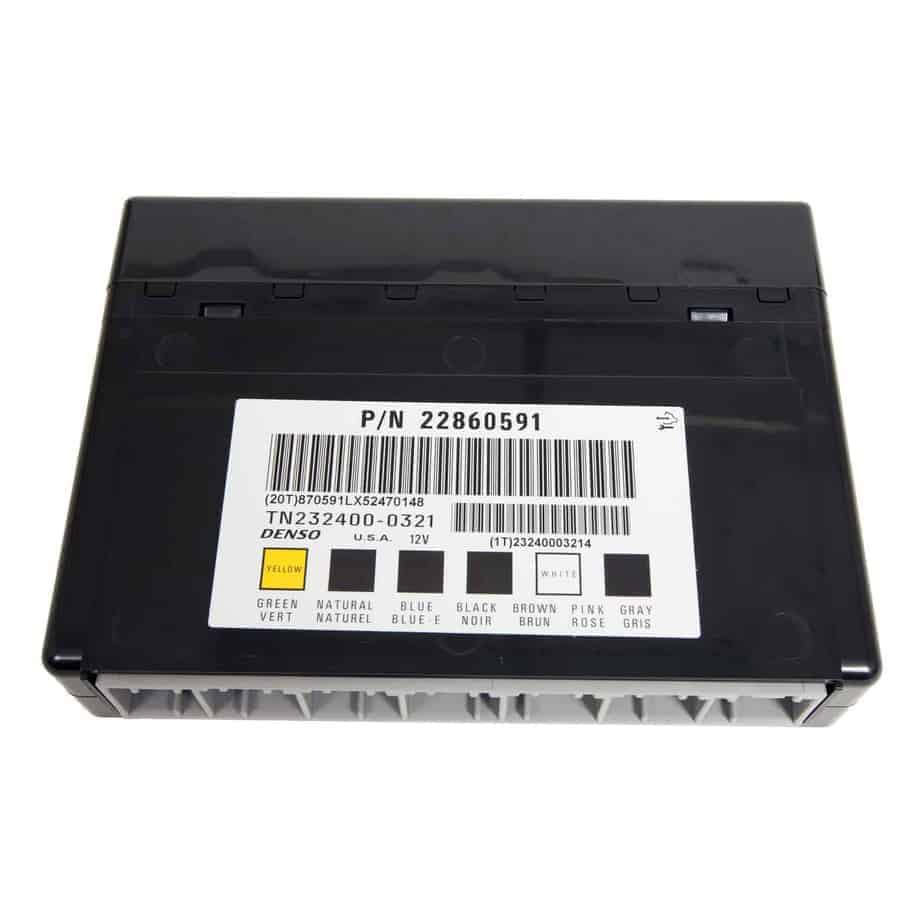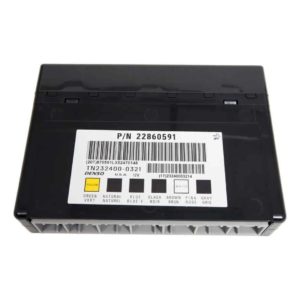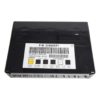Restore Full Electrical Function to Your GM Vehicle
If you’re dealing with baffling electrical issues in your 2010 Suburban—like power windows with a mind of their own, flickering dash lights, or a security system that prevents your truck from starting—you’re not alone. These are classic signs of a failing Body Control Module (BCM). As the central nervous system for your vehicle’s comfort and convenience features, a faulty BCM can turn your reliable ride into a source of daily frustration. I’ve seen it countless times in my 20+ years on the shop floor: what seems like multiple, unrelated electrical problems often traces back to this single component.
This isn’t just a replacement part; it’s a complete, ready-to-install solution. We take the guesswork and extra expense out of the repair by pre-programming this BCM specifically for your vehicle using your VIN. This means it arrives flashed with the latest GM software updates, ready to restore communication between your vehicle’s essential systems. You get a reliable fix without the costly trip to the dealership for programming.
Case Study: A Tricky Diagnosis
A customer’s 2010 Suburban came in last week with a laundry list of complaints: the radio would cut out, the driver’s side power seat was dead, and the remote keyless entry worked only intermittently. They had already replaced the battery and checked fuses with no luck. A scan showed a dozen communication codes pointing in different directions. From experience, I knew this wasn’t a dozen separate failures. It was a classic case of a failing BCM scrambling signals. We installed one of our VIN-programmed modules, and in under an hour, every single issue was resolved. This part saved the customer from a wild goose chase and hundreds in diagnostic fees.
Is Your Vehicle Showing These Electrical Gremlins?
- ✔ Intermittent or non-working power windows, door locks, or mirrors.
- ✔ Erratic interior or exterior lighting, including flickering dash lights.
- ✔ Security system faults or a “Service Theft System” message.
- ✔ A no-start condition where the engine cranks but won’t fire up.
- ✔ Unresponsive remote keyless entry fobs.
- ✔ False warnings on the driver information center (DIC).
- ✔ Radio or climate control systems acting strangely.
Your Straightforward BCM Installation Guide
Replacing the 2010 Suburban Body Control Module is a manageable job for a confident DIYer. The BCM is typically located under the driver’s side of the dashboard, near the steering column.
- Safety First: Disconnect the negative terminal from your vehicle’s battery and wait at least 10 minutes to allow all systems to power down completely.
- Locate the BCM: On your Suburban, you’ll find the BCM mounted to a bracket under the steering column. You may need to remove a lower dash panel for access.
- Disconnect and Remove: Carefully unplug the electrical connectors from the old BCM. They have locking tabs, so be gentle. Once disconnected, unbolt the module from its mounting bracket.
- Install the New Module: Mount your new, pre-programmed BCM onto the bracket and securely plug in all the electrical connectors. You should hear a click as they lock into place.
- Post-Installation Procedures: Reconnect the battery terminal. This is the most critical part. You MUST perform the required relearn procedures to ensure full functionality.
CRITICAL: After You Install
Simply swapping the part isn’t the final step. To avoid warning lights and ensure safety systems are active, you must perform two key procedures with a compatible high-end diagnostic scan tool:
- Airbag System Reset: You must perform the ‘Setup SDM Primary Key in BCM’ procedure. This step is mandatory to clear the airbag warning light and ensure the Supplemental Restraint System (SRS) is operational.
- Brake Pedal Position Sensor Relearn: Some vehicles require the Brake Pedal Position Sensor to be recalibrated after a BCM replacement. This ensures the brake lights and stability control systems function correctly.
If you are not equipped to perform these steps, a professional mechanic can complete them for you after you’ve installed the module.
Guaranteed Fitment for Your GM Vehicle
This 2010 Suburban Body Control Module is a direct replacement for a wide range of original equipment part numbers. Please verify your part number is on this list for guaranteed compatibility.
Replaces Part Numbers: 10382479, 15093910, 15276271, 15299986, 15819552, 15828601, 15837419, 15872388, 15872421, 15880684, 15921352, 15921353, 15948438, 15948439, 20815898, 20839063, 20864767, 20864768, 20921435, 20921436, 20935349, 22860591, 25826124, 25826125, 25847588, 25847589, 25892622, 25910474, 25934762, 25934763, 95151084
Fits a wide variety of GM Models including: Acadia, Avalanche, Caprice, Captiva Sport, CTS, DTS, Enclave, Equinox, Escalade, Express, G8, Hummer H2, Impala, Lucerne, Monte Carlo, Outlook, Savana, SRX, STS, Suburban, Tahoe, Torrent, Traverse, Vue, and Yukon. Please use the fitment tool to confirm your specific vehicle and options.
Frequently Asked Questions
Do I need to program this module?
No. We program the module to your vehicle’s VIN before shipping. It arrives ready for installation and the final relearn procedures.
Where is the BCM located on my 2010 Suburban?
It is located under the driver’s side dashboard, typically attached to a bracket near the steering column.
What happens if I don’t provide my VIN?
We cannot ship the module without your vehicle’s 17-digit VIN. The programming is essential for the part to function correctly in your specific vehicle.
Will this fix my power window and door lock problems?
If the BCM is the root cause of the failure, then yes. This module controls those functions, and replacing a faulty one is the correct repair.
What tools are needed for the post-installation procedures?
You will need a professional-grade bidirectional scan tool (like a Tech 2, Snap-on, or high-end Autel) that can perform the ‘Setup SDM Primary Key’ and ‘Brake Pedal Position Sensor Relearn’ functions.
Is this a difficult part to install myself?
The physical installation is straightforward for most DIYers with basic tools. The challenge lies in the post-installation electronic relearn procedures, which require a specific type of scan tool.


